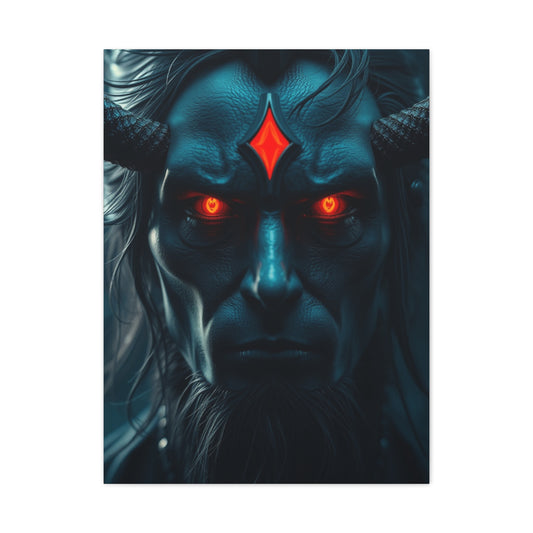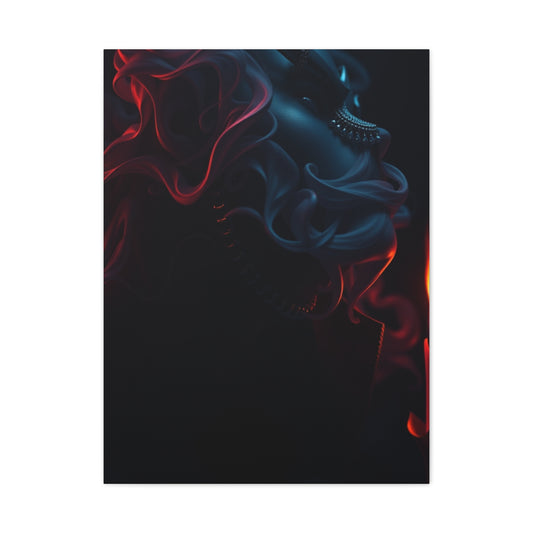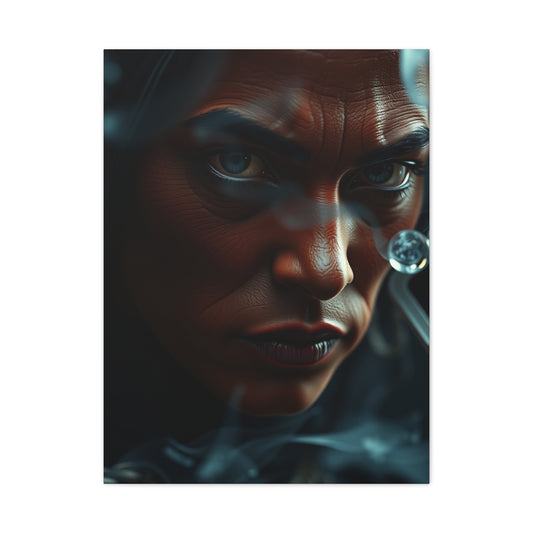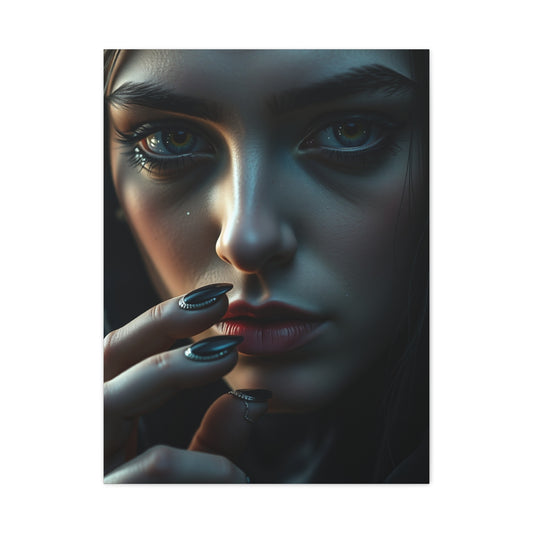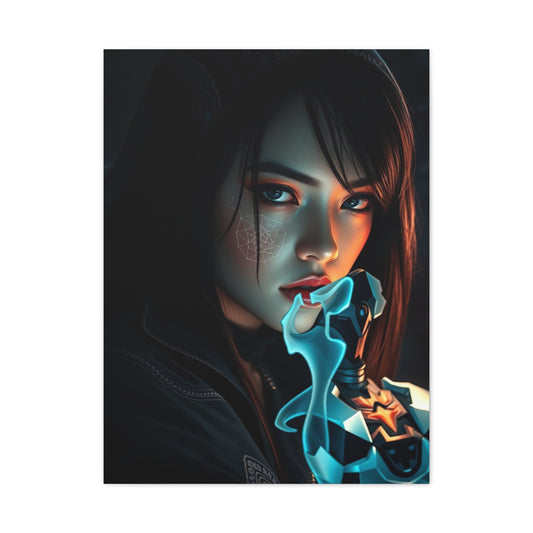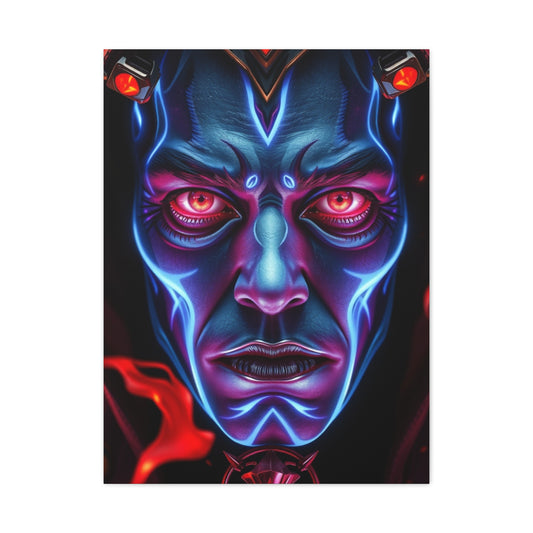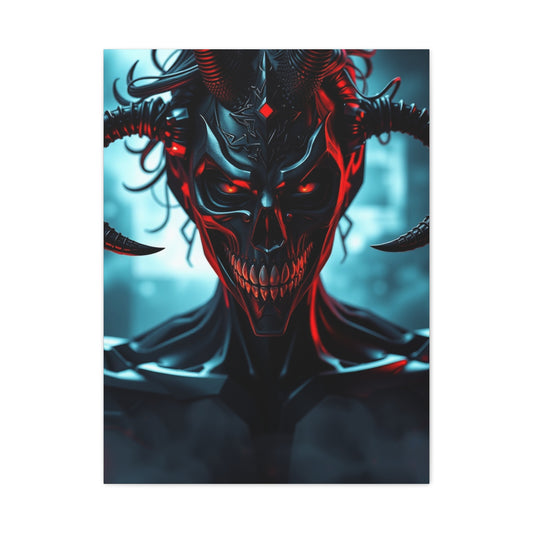Moody Makeover: Dark Wall Art Ideas for Every Room
The contemporary interior design landscape has witnessed a remarkable renaissance in sophisticated color palettes, with Dark Walls emerging as the quintessential fall home update that discerning homeowners have been eagerly anticipating. This revolutionary design approach transcends conventional decorating wisdom, embracing the profound elegance and dramatic sophistication that darker hues contribute to residential spaces throughout the autumn season and beyond.
The transformative power of Dark Walls extends far beyond mere aesthetic enhancement, fundamentally altering the atmospheric dynamics of interior environments while creating immersive sanctuaries that reflect refined taste and contemporary design sensibilities. This comprehensive approach to fall home update strategies represents a paradigm shift from traditional light-dominated interiors toward more nuanced, psychologically engaging spaces that resonate with occupants on deeper emotional levels.
Professional interior designers worldwide recognize Dark Walls as the fall home update that addresses multiple design objectives simultaneously: creating visual depth, establishing focal points, enhancing architectural features, and providing sophisticated backdrops for curated collections and artistic expressions. This multifaceted approach ensures that the Dark Walls fall home update delivers transformative results that justify the investment in both materials and implementation efforts.
The psychological impact of incorporating Dark Walls into residential environments during autumn months aligns perfectly with seasonal transitions, creating cozy sanctuaries that embrace the contemplative nature of fall while preparing interiors for extended indoor living periods. This strategic fall home update approach acknowledges the inherent connection between environmental color and human psychology, leveraging darker palettes to create spaces that feel both protective and inspiring.
Understanding the comprehensive benefits of Dark Walls as a fall home update requires examination of their impact on spatial perception, lighting dynamics, furnishing relationships, and overall aesthetic cohesion within contemporary residential environments. This sophisticated design strategy transforms ordinary rooms into extraordinary living spaces that reflect personal style while maintaining timeless appeal.
The Psychological and Emotional Impact of Dark Walls in Fall Interior Design
Choosing dark-toned walls as a central element of a fall home update strategy goes far beyond mere aesthetics. It taps into the profound psychological effects that colors have on our emotions and spatial perception, creating an environment where relaxation, comfort, and introspection flourish. Dark walls can significantly transform a space, imbuing it with a sense of warmth and security, while also contributing to a more sophisticated and serene atmosphere. The psychological advantages of dark tones are especially potent in the fall season, which is inherently associated with introspection, coziness, and the desire for environments that encourage rest and rejuvenation. By understanding the impact of these tones, homeowners can create spaces that reflect both practical functionality and emotional comfort.
Dark walls offer an opportunity to disconnect from the overstimulation of bright, harsh environments. They allow individuals to retreat into a space that feels secure and contained, perfect for the more contemplative, inward-focused time that the fall season often invites. These walls, when thoughtfully applied, can foster feelings of comfort and emotional stability, making them an ideal choice for crafting environments that support relaxation and mental clarity. The timeless nature of dark tones also ensures that the emotional and psychological benefits they provide remain relevant across changing seasons and evolving design trends.
Emotional Comfort and Warmth: How Dark Walls Enhance Fall Atmosphere
The emotional benefits of dark walls are immediately evident when applied to fall interiors. As the temperature drops and the days grow shorter, our natural desire for warmth and security intensifies. Dark walls offer an unparalleled ability to create a cozy sanctuary, enveloping the space with a sense of comfort and protection. This psychological effect aligns perfectly with the autumn season, which is marked by the desire to gather indoors, reflect, and unwind from the stresses of daily life.
Research in color psychology shows that darker colors have the ability to evoke feelings of calmness, stability, and relaxation. When incorporated into the design of a room, these tones create a serene environment that encourages individuals to slow down and savor the moments spent in that space. Dark walls become more than just a design choice—they become a tool for emotional well-being, enhancing the overall mood of the home and providing a calming retreat from the outside world. This emotional comfort is particularly important in the fall, when many people seek refuge from the increasing chaos of holiday preparations and outdoor responsibilities.
Furthermore, the psychological warmth provided by dark tones enhances the sensory experience of the home. As natural light fades, dark walls help to create a soft, intimate atmosphere, making spaces feel inviting and snug. This cozy effect is amplified when paired with warm textiles, such as velvet throw pillows, wool blankets, and deep-hued rugs, which further enhance the fall atmosphere of the room.
Dark Walls as a Foundation for Sophisticated Interior Design
One of the most compelling reasons for incorporating dark walls into fall home updates is the sophisticated aesthetic they bring to a space. Dark tones have a refined and timeless quality that immediately elevates the design of any room, transforming it from a simple living area into a curated and thoughtfully designed space. Whether used in a bedroom, living room, or dining area, dark walls create a backdrop that allows other design elements—such as artwork, furniture, and lighting fixtures—to stand out and make a statement.
Incorporating dark walls demonstrates a clear commitment to creating a design-forward environment. Homeowners who opt for dark tones understand that this design choice transcends fleeting trends and offers a sense of permanence and maturity. By choosing colors like charcoal, deep navy, rich plum, or forest green, individuals can establish a foundation for an interior design that feels both current and enduring, reflecting their refined taste and style.
Additionally, dark walls are particularly versatile when it comes to enhancing the overall style of the room. Whether the goal is to create a modern minimalist aesthetic, a bohemian-inspired retreat, or a traditional, opulent space, dark walls serve as a sophisticated canvas that can adapt to any design direction. The richness of the color adds depth and dimension to the room, creating an atmosphere that feels both chic and inviting. As an essential design element, dark walls allow for the creation of spaces that are not only functional but also visually stimulating, providing a focal point for conversation and reflection.
The Versatility of Dark Walls: Adapting to Various Design Styles
Dark walls are known for their aesthetic versatility, complementing a wide range of design styles, from contemporary and industrial to classic and vintage-inspired. The adaptability of dark tones ensures that they can seamlessly integrate into any home, regardless of its existing furnishings or design language. This quality makes dark walls an especially attractive option for homeowners looking to update their space while maintaining the integrity of their existing décor.
For modern, minimalist interiors, dark walls can create a sleek and sophisticated look that accentuates clean lines, neutral tones, and uncluttered spaces. In contrast, in more traditional or vintage-inspired homes, dark walls can serve as a striking backdrop to ornate furniture, antique décor, and layered textiles. The ability of dark tones to complement a variety of design styles ensures that they remain a timeless choice for any home update, regardless of changing tastes or trends.
When paired with lighter elements, such as light wood furniture or metallic accents, dark walls can create an appealing contrast that enhances the room’s overall visual complexity. This balance of light and dark can add depth to the space, creating a dynamic atmosphere that feels both grounded and expansive. Additionally, the richness of dark colors helps to emphasize architectural details, such as crown moldings, baseboards, and window frames, adding an element of refinement and elegance to the room’s design.
Visual Transformation: The Dramatic Effect of Dark Walls
One of the most striking advantages of dark walls in a fall home update is their ability to create an immediate and dramatic transformation within a space. Dark tones have the power to visually alter the size, shape, and character of a room, turning even the most mundane spaces into visually striking environments. Whether applied to an entire room or used as an accent wall, dark walls can completely redefine the atmosphere of a space, making it feel more intimate, inviting, and sophisticated.
In smaller rooms, dark walls can create a cozy, cocoon-like atmosphere that encourages relaxation and contemplation. The deep hues envelop the space, making it feel more private and serene. In larger rooms, dark walls can help to break up the space, adding a sense of intimacy and grounding the room. By contrasting dark walls with lighter furniture or décor, designers can create focal points that capture the eye, ensuring that the room feels balanced and visually cohesive.
The dramatic impact of dark walls also extends to the overall flow of the home. In open-plan living spaces, dark walls can help delineate different areas within the room, creating visual interest and guiding movement. Whether used in a formal dining room, a cozy living area, or a private reading nook, dark walls provide a sense of structure and definition, ensuring that each space serves a distinct purpose while maintaining an overall sense of harmony and unity.
Long-Term Design Investment: The Enduring Appeal of Dark Walls
Dark walls represent a long-term design investment, offering timeless appeal and lasting versatility that will not fade with passing trends. Unlike brighter colors, which may feel dated or out of place as design trends evolve, dark tones maintain their relevance, offering a sophisticated backdrop that complements new furniture, accessories, and décor over time.
This durability makes dark walls an especially smart choice for homeowners who wish to create spaces that will remain stylish and inviting for years to come. Whether the goal is to update a single room or to transform an entire home, dark walls provide a foundation that supports future design changes, ensuring that the space evolves and adapts while maintaining its elegance.
Moreover, the timeless nature of dark walls allows homeowners to experiment with different design elements without fear of clashing or overwhelming the room. Over time, as furniture and décor pieces are updated or replaced, dark walls continue to provide a cohesive background that allows the room’s design to grow and evolve in line with changing tastes and preferences.
Enhancing Architectural Features with the Strategic Use of Dark Walls
The application of dark walls can dramatically elevate the architectural appeal of a space by highlighting key structural elements that might otherwise be overlooked. When used thoughtfully, dark tones can emphasize moldings, trim, ceiling features, and other architectural nuances, enhancing their visual prominence and adding sophistication to the design. This technique allows for the creation of a space that feels more refined, dynamic, and visually cohesive without requiring expensive or invasive renovations. For homeowners seeking to modernize their living environments while celebrating the inherent beauty of their home’s architecture, strategic dark wall placement offers a powerful solution.
Unlike light-colored walls, which often blend with or dilute the visibility of architectural details, dark tones provide a stark contrast that draws the eye to the intricacies of a room's design. This is particularly valuable in homes with high ceilings, ornate trim work, or other defining features that deserve attention. By using dark shades to frame these elements, the walls themselves serve as a canvas that enhances the natural beauty of the architectural components within the room. This subtle but impactful approach can be especially effective in fall home updates, where the desire for a cozier, more intimate space meets the need to bring attention to key elements of the home.
Dark Walls as a Functional Divider in Open-Concept Spaces
The shift towards open-concept layouts has transformed the way homes are designed, emphasizing a fluidity between living spaces that fosters a sense of openness and connection. However, these designs often come with challenges in terms of creating distinct zones within the space while maintaining a sense of unity. Dark walls offer an elegant solution to this problem by acting as subtle yet effective dividers that define different areas within the open layout without the need for physical walls or partitions.
In large, open-concept rooms, dark walls can be used to delineate spaces such as the living area, dining room, or study nook, providing visual boundaries that help to structure the room’s function. These walls prevent the space from feeling too vast or fragmented, allowing for the creation of intimate pockets within a larger, more expansive area. By strategically placing dark walls along key points, designers can achieve a seamless flow between areas while ensuring that each part of the room feels cohesive and well-defined.
Furthermore, this application of dark walls can be extended to modern living spaces with multi-functional zones, such as kitchens that flow into living or dining areas. Darker walls serve to anchor the space and make it feel grounded, providing a visual anchor that ties the entire layout together. This approach works well in homes that have a minimalist design, where simplicity and function are prioritized over ornate structures. The dark tones can create a sense of continuity, making the entire space feel unified, while still preserving the individuality of each zone.
Creating Illusions of Height and Depth with Dark Walls
Dark walls have the unique ability to manipulate spatial perception, a quality that is particularly beneficial in homes with challenging layouts or rooms with unusual proportions. One of the most remarkable effects that dark walls can have is the ability to alter the perception of ceiling height. By strategically placing darker tones on specific wall sections, homeowners can create the illusion of greater vertical space, making the room appear taller and more expansive. This effect is especially useful in rooms with low ceilings, where darker shades can be used to visually "raise" the space, making it feel more open and airy.
On the other hand, dark walls also provide the opportunity to visually anchor a room. In spaces with high ceilings, dark tones on lower walls or around certain architectural features can help create a balanced, grounded atmosphere. This technique serves to add visual weight to the room and can make an overly lofty space feel more proportionate and inviting. The interplay between the walls and ceiling can significantly enhance the room's overall aesthetic, making it feel more complete and less disjointed.
Using dark walls to manipulate the perception of space is not just about changing the room’s dimensions. It’s about enhancing the overall atmosphere of the room and creating a more intentional design. Whether the goal is to open up a small room or make a grand room feel more intimate, dark walls offer versatile options for enhancing spatial flow and creating visual harmony.
Highlighting Windows and Natural Light with Dark Wall Treatments
In many homes, windows are one of the most important architectural features, offering views of the outdoors and providing natural light that brings life to the space. However, when surrounding surfaces are too bright or overpowering, windows can become lost in the overall design. Dark walls offer a way to frame windows effectively, making them more prominent and creating a strong contrast with the light streaming through them.
When dark tones are used around windows, the architectural openings stand out more clearly, drawing the eye toward them and enhancing the view. This is particularly valuable in spaces where the window serves as a focal point, such as rooms with picturesque outdoor views or in areas where natural light is a primary source of illumination. By highlighting the window with dark walls, homeowners can create a more cohesive flow between the interior and exterior, allowing the surrounding landscape to become an integral part of the room's design.
Additionally, dark walls can transform the way natural light interacts with the space. By absorbing some of the light and redistributing it throughout the room, dark surfaces create a balanced lighting effect that feels both warm and intimate. This is particularly beneficial in fall home updates, where the lower angle of sunlight and shorter days can make natural light more precious and desirable. By using dark walls as a complementary element to natural light, homeowners can enhance the mood and ambiance of the room, making it feel cozy and inviting.
Dark Walls and Artificial Lighting: A Dynamic Pairing
When dark walls are incorporated into a space, they significantly affect the way artificial lighting interacts with the room. This relationship opens up exciting possibilities for creating dynamic lighting strategies that enhance both the functionality and atmosphere of the space. Because dark walls absorb more light, the lighting plan must be carefully considered to ensure that the room remains well-lit and functional without feeling overly bright or harsh.
Strategically placed ceiling lights, pendant fixtures, or wall sconces can help to balance the light-dark contrast in the room. For example, ambient lighting sources can be used to provide general illumination, while task lighting can be directed towards specific areas such as reading corners, artwork, or architectural details. Accent lighting, like LED strips or spotlights, can be used to highlight key features of the room, adding depth and drama to the space. The key to a successful lighting strategy in dark rooms is layering different types of light to create a balance that feels both natural and inviting.
This careful integration of artificial lighting with dark walls also opens up opportunities for creating mood lighting that enhances the room’s atmosphere. By using dimmers or adjustable light sources, homeowners can easily adjust the intensity of the lighting based on the time of day or the activity at hand. Whether it's a bright, vibrant atmosphere for a gathering or a softer, more intimate feel for a quiet evening, the combination of dark walls and strategic lighting provides a high degree of flexibility and control.
Defining and Enhancing Structural Boundaries with Dark Walls
In homes with open floor plans or multiple levels, maintaining a sense of structural continuity and clear boundaries can be a challenge. Dark walls serve as an ideal solution by defining key structural elements without overwhelming the space. Whether used to highlight a stairwell, emphasize a feature wall, or delineate separate zones within an open-plan layout, dark walls can visually reinforce the architectural boundaries of the room while maintaining a cohesive design.
When dark walls are strategically placed along structural boundaries, such as columns, beams, or archways, they create a clear division between spaces. This not only helps to define each area but also enhances the architectural features, making them stand out as deliberate design elements rather than background details. This approach helps to preserve the openness and flow of the space, while still maintaining a sense of structure and definition that is crucial for creating a functional home.
For example, in multi-level homes or loft-style spaces, dark walls can be used to visually separate different levels or zones without the need for physical barriers. This technique preserves the openness of the layout, while still allowing for the creation of distinct areas that serve specific purposes. In this way, dark walls become an essential tool for managing the spatial flow of the home while enhancing its architectural integrity.
Comprehensive Design Element Enhancement and Visual Hierarchy Optimization
The transformative impact of Dark Walls on surrounding design elements represents one of the most compelling reasons for selecting this fall home update approach, as darker backgrounds create enhanced contrast that makes artwork, furnishings, and decorative accessories appear more vibrant and visually significant within interior compositions.
Gallery wall presentations achieve unprecedented visual impact when positioned against Dark Walls, with the increased contrast making individual pieces appear more prominent while creating cohesive collections that command attention and demonstrate curatorial expertise. This fall home update approach transforms ordinary wall displays into sophisticated artistic presentations worthy of professional gallery spaces.
Metallic finishes and reflective surfaces gain enhanced prominence when surrounded by Dark Walls, as the contrast between light-reflecting elements and darker backgrounds creates dramatic visual effects that add luxury and sophistication to interior environments. This relationship enables homeowners to maximize the impact of existing decorative investments while creating opportunities for strategic accent additions.
Textile and fabric presentations benefit tremendously from Dark Walls backgrounds, as the enhanced contrast emphasizes patterns, textures, and colors that might appear subdued against lighter surfaces. This fall home update approach creates opportunities for showcasing textile collections, decorative pillows, window treatments, and upholstered furnishings with greater visual impact and aesthetic significance.
The hierarchy of visual elements within rooms transforms when Dark Walls provide sophisticated backdrops, enabling homeowners to direct attention toward specific features while de-emphasizing less significant elements. This strategic approach to visual composition ensures that Dark Walls contribute to overall design coherence rather than creating overwhelming or chaotic visual environments.
Strategic Color Relationships and Sophisticated Contrast Development
Successful Dark Walls implementation as a fall home update requires sophisticated understanding of color relationships and contrast principles that ensure harmonious integration with existing design elements while creating visually striking compositions that enhance rather than overwhelm residential spaces.
Complementary color strategies leverage scientific color theory to create dynamic relationships between Dark Walls and surrounding elements, ensuring that contrast enhances visual interest while maintaining aesthetic harmony throughout interior environments. Understanding these relationships enables homeowners to make informed decisions about accent colors, furnishing selections, and decorative element integration.
Monochromatic approaches to Dark Walls implementation create sophisticated, layered environments that demonstrate refined color sensitivity while maintaining visual coherence across diverse surface treatments and material selections. This fall home update strategy appeals to homeowners seeking subtle sophistication rather than dramatic contrast effects.
Temperature balance considerations ensure that Dark Walls contribute to comfortable, inviting environments rather than creating spaces that feel cold or unwelcoming. Strategic selection of warm or cool dark tones influences the overall atmospheric character of rooms while supporting desired mood and functionality objectives.
Seasonal color coordination enables Dark Walls to serve as versatile backgrounds that accommodate changing decorative themes throughout the year while maintaining their effectiveness as foundational design elements. This long-term perspective on fall home update planning ensures sustained satisfaction with Dark Walls investments across multiple seasons and evolving personal preferences.
Advanced Styling Techniques for Dark Wall Environments
Professional styling of Dark Walls environments requires sophisticated understanding of lighting, furnishing, and accessory relationships that maximize the aesthetic potential of darker surfaces while maintaining functional comfort and visual balance within residential spaces.
Layered lighting strategies become essential components of successful Dark Walls implementation, as darker surfaces absorb rather than reflect light, requiring strategic illumination planning to ensure adequate functional lighting while creating atmospheric effects that enhance the sophisticated character of dark-toned environments.
Metallic accent integration provides essential contrast and visual interest within Dark Walls environments, with gold, silver, copper, and brass elements creating luminous focal points that prevent darker spaces from appearing monotonous while adding luxury and sophistication to overall design compositions.
Texture variation becomes critically important in Dark Walls environments, as the reduced color contrast requires enhanced tactile and visual texture diversity to maintain sensory interest and prevent spaces from appearing flat or one-dimensional. Strategic combination of smooth, rough, glossy, and matte surfaces creates complex visual experiences within darker color palettes.
Scale and proportion considerations require careful attention in Dark Walls environments, as darker backgrounds can influence perception of object sizes and spatial relationships. Understanding these optical effects enables homeowners to select appropriately sized furnishings and accessories that maintain proper visual balance within sophisticated dark-toned spaces.
Selective Application Strategies and Spatial Considerations
The strategic application of Dark Walls as a fall home update requires careful consideration of spatial characteristics, functional requirements, and existing design elements to ensure successful integration that enhances rather than overwhelms residential environments.
Accent wall approaches provide excellent introduction strategies for homeowners new to Dark Walls implementation, allowing experimentation with darker color palettes while maintaining familiar light-toned surfaces in the majority of room areas. This conservative fall home update approach enables gradual adaptation to darker environments while minimizing potential regret or dissatisfaction.
Room size considerations influence Dark Walls effectiveness, with larger spaces generally accommodating extensive dark surface treatments more successfully than smaller rooms where excessive dark coloration might create claustrophobic or oppressive feelings. Understanding these relationships enables appropriate scale planning for Dark Walls implementation projects.
Natural lighting availability significantly impacts Dark Walls success, with well-lit spaces providing ideal conditions for darker color implementations while poorly lit areas requiring careful planning and supplemental lighting strategies to maintain comfortable, functional environments.
Traffic pattern analysis ensures that Dark Walls placement supports rather than interferes with daily living activities while creating appropriate visual emphasis for gathering areas and focal point locations within residential floor plans.
Existing architectural features and built-in elements influence optimal Dark Walls placement strategies, with considerations including trim colors, flooring materials, ceiling treatments, and fixed architectural elements that must harmonize with proposed dark surface treatments.
Innovative Textural Applications and Surface Treatment Variations
The concept of Dark Walls extends beyond traditional paint applications to encompass diverse textural treatments and surface variations that add dimensional interest while maintaining the sophisticated character that makes this fall home update approach so compelling for contemporary homeowners.
Exposed brick applications provide naturally occurring Dark Walls opportunities that combine sophisticated coloration with appealing textural elements, creating visually complex surfaces that serve as compelling focal points while requiring minimal maintenance or updating efforts. These existing architectural features represent valuable Dark Walls resources that homeowners can enhance through strategic lighting and styling approaches.
Wood panel treatments offer another avenue for Dark Walls implementation that combines natural material beauty with sophisticated dark coloration, creating environments that feel both organic and refined while supporting diverse design style preferences from rustic to contemporary applications.
Wallpaper applications enable Dark Walls implementation through pattern integration, texture addition, and specialized finishing techniques that create unique visual effects impossible to achieve through paint alone. Contemporary wallpaper options provide sophisticated Dark Walls solutions that combine color impact with design element integration.
Stone and masonry applications provide permanent Dark Walls solutions that add significant architectural character while creating surfaces that improve with age and develop unique patina characteristics over time. These substantial surface treatments represent long-term investments in Dark Walls sophistication.
Alternative surface treatments including fabric applications, panel systems, and specialty coatings provide customizable Dark Walls solutions that address specific functional requirements while maintaining aesthetic sophistication appropriate for contemporary residential environments.
Color Psychology and Seasonal Alignment Benefits
The psychological impact of Dark Walls as a fall home update aligns naturally with seasonal transitions and the human tendency toward seeking cozy, protective environments during autumn months when outdoor temperatures decline and daylight hours diminish significantly.
Seasonal affective considerations support Dark Walls implementation during fall months, as darker interior environments complement reduced natural lighting while creating intimate sanctuaries that support psychological well-being during transitional seasons. This alignment between interior color choices and seasonal patterns enhances the effectiveness of Dark Walls as a fall home update strategy.
Circadian rhythm support through strategic Dark Walls implementation creates environments that promote relaxation and restful sleep, particularly when applied in bedroom and evening gathering areas where darker surfaces contribute to natural wind-down processes and improved sleep quality.
Stress reduction benefits associated with Dark Walls environments include enhanced feelings of security, reduced visual overstimulation, and improved focus capabilities that support both work and relaxation activities within residential spaces.
Cultural associations with darker color palettes include sophistication, luxury, mystery, and depth that contribute to enhanced self-perception and social confidence when entertaining guests within thoughtfully designed Dark Walls environments.
The contemplative qualities encouraged by Dark Walls environments support mindfulness practices, creative activities, and intellectual pursuits that benefit from reduced distractions and enhanced focus capabilities provided by sophisticated dark surface treatments.
Technical Implementation Considerations and Professional Standards
Successful Dark Walls implementation requires attention to technical details including paint selection, surface preparation, application techniques, and finishing procedures that ensure professional-quality results capable of withstanding daily use while maintaining aesthetic appeal over extended periods.
Paint quality considerations become particularly important for Dark Walls applications, as darker colors reveal surface imperfections more readily than lighter tones while requiring superior coverage capabilities and fade resistance to maintain uniform appearance throughout extended service life.
Surface preparation requirements for Dark Walls exceed those necessary for lighter color applications, as any underlying imperfections, stains, or texture variations become more apparent against darker backgrounds. Professional preparation techniques ensure optimal results that justify investment in premium Dark Walls implementation.
Application technique expertise ensures uniform color coverage and professional finish quality that maintains Dark Walls sophistication while preventing common problems including lap marks, roller texture visibility, and color variation that can compromise aesthetic effectiveness.
Primer selection and application become critical success factors for Dark Walls projects, as proper foundation preparation ensures optimal color development and coverage while providing enhanced durability and fade resistance essential for long-term satisfaction with Dark Walls investments.
Quality control procedures throughout Dark Walls implementation include proper lighting evaluation, color matching verification, and finish quality assessment that ensure completed projects meet professional standards worthy of sophisticated residential environments.
Long-Term Maintenance and Evolution Strategies
Dark Walls environments require specific maintenance approaches and evolution strategies that preserve their sophisticated character while accommodating changing personal preferences and design trends that may influence long-term satisfaction with this fall home update investment.
Cleaning and maintenance protocols for Dark Walls differ from those appropriate for lighter surfaces, as darker colors may show dust, fingerprints, and surface damage differently while requiring specialized techniques to maintain uniform appearance and color integrity.
Touch-up procedures become particularly important for Dark Walls applications, as color matching and blend requirements exceed those necessary for lighter surface treatments. Understanding proper touch-up techniques ensures long-term appearance maintenance without requiring complete repainting projects.
Evolution planning enables Dark Walls environments to accommodate changing personal preferences through strategic accent modifications, lighting adjustments, and accessory updates rather than requiring complete surface treatment replacement when design preferences shift.
Seasonal decoration integration with Dark Walls environments requires understanding of color relationships and visual balance that enable temporary decorative additions without compromising the sophisticated character of permanent dark surface treatments.
Future trend adaptation strategies ensure that Dark Walls investments remain current and appealing across changing design preferences while providing sufficient flexibility to accommodate emerging aesthetic trends without requiring complete interior renovations.
Professional Design Integration and Style Coordination
Dark Walls implementation benefits significantly from professional design guidance that ensures successful integration with existing architectural elements, furnishing collections, and personal lifestyle requirements while maximizing aesthetic impact and functional effectiveness.
Style coordination requires understanding of how Dark Walls interact with specific design vocabularies including modern, traditional, transitional, and eclectic approaches that may influence color selection, application strategies, and accessory coordination decisions.
Proportional considerations ensure that Dark Walls application scale matches room dimensions, architectural features, and furnishing sizes while maintaining visual balance that supports rather than overwhelms existing design elements within residential environments.
Material coordination includes understanding relationships between Dark Walls and flooring materials, window treatments, upholstery selections, and architectural finishes that must harmonize to create cohesive, sophisticated interior environments worthy of professional design standards.
Budget planning for comprehensive Dark Walls implementation includes consideration of related improvements including lighting upgrades, furnishing modifications, and accessory additions that may be necessary to achieve optimal results from this significant fall home update investment.
Timeline development ensures systematic Dark Walls implementation that minimizes disruption to daily living while allowing adequate time for proper surface preparation, application procedures, and related improvement projects that support comprehensive interior transformation goals.
Creative Applications and Innovative Design Solutions
Contemporary Dark Walls applications extend beyond traditional room treatments to include innovative solutions that maximize visual impact while addressing specific functional requirements and aesthetic preferences within diverse residential environments.
Geometric applications of Dark Walls create dynamic visual effects through strategic pattern integration, partial wall treatments, and architectural element emphasis that add contemporary sophistication while maintaining functional effectiveness within residential spaces.
Gradient techniques enable subtle Dark Walls effects that transition between different color intensities while creating sophisticated visual movement that adds interest without overwhelming smaller spaces or conservative design preferences.
Multi-room coordination strategies ensure that Dark Walls applications throughout residential environments create unified aesthetic themes while maintaining individual room character and functional appropriateness for diverse living activities.
Outdoor extension opportunities include Dark Walls applications in covered porches, outdoor living rooms, and transitional spaces that extend sophisticated interior design themes into exterior environments while maintaining weather resistance and durability.
Seasonal variation strategies enable Dark Walls to serve as foundations for changing decorative themes throughout the year while maintaining their effectiveness as sophisticated background elements that support diverse aesthetic expressions and personal preferences.
The comprehensive exploration of Dark Walls as the ultimate fall home update reveals the transformative potential of this sophisticated design strategy for creating residential environments that reflect refined taste while supporting contemporary lifestyle requirements. This multifaceted approach to interior enhancement delivers immediate visual impact while providing long-term satisfaction through timeless aesthetic appeal and functional effectiveness.
Professional implementation of Dark Walls requires careful planning, quality materials, and attention to technical details that ensure results worthy of the investment while maintaining the sophisticated character that makes this fall home update approach so compelling for discerning homeowners seeking distinctive interior environments.
The psychological benefits, aesthetic advantages, and practical considerations associated with Dark Walls implementation demonstrate why this fall home update strategy has gained recognition among interior design professionals and homeowners seeking to create extraordinary living spaces that transcend conventional decorating approaches while maintaining livability and comfort.
Final Thoughts
Dark walls are no longer a niche experiment or a fleeting seasonal trend—they have become a cornerstone of sophisticated, high-impact interior design, and this fall, they stand out as the ultimate home update for those seeking meaningful transformation. Their power lies not only in their visual drama but in the way they engage our emotions, reshape our perception of space, and redefine how we interact with our homes. More than just color, they embody a philosophy of living that embraces comfort, depth, and refinement.
At the psychological level, dark walls perfectly complement the autumn season. As days shorten and natural light fades earlier, these hues provide the cocooning effect we instinctively crave during colder months. They encourage us to slow down, rest, and embrace introspection. A living room enveloped in forest green or midnight navy doesn’t just look striking—it feels protective, like a sanctuary designed to support quiet evenings, warm gatherings, and contemplative moments. This alignment with seasonal rhythms is what makes dark walls such a powerful choice for fall: they not only transform how a space looks but how it feels to inhabit.
From a design perspective, the versatility of dark walls is unparalleled. They are as comfortable in a modern minimalist loft as they are in a traditional townhouse or a bohemian-inspired retreat. Their richness provides an elegant canvas for experimentation, allowing homeowners to highlight architectural features, showcase artwork, or elevate furnishings. Unlike lighter walls that sometimes fade into the background, dark walls take an active role in storytelling. They frame windows to magnify views, emphasize moldings and ceiling heights, and create visual boundaries within open-concept layouts. In short, they don’t just decorate—they sculpt the character of the room.
Perhaps the most enduring strength of dark walls is their timelessness. While design trends come and go, rich tones like charcoal, plum, or deep emerald carry a permanence that transcends fads. They mature with the home, adapting gracefully as furniture, textiles, and decorative accents evolve. For homeowners, this makes them not only a seasonal update but also a long-term investment in style. Over time, the same set of dark walls can support multiple design directions: opulent with gold and velvet in winter, breezy with whites and fresh florals in spring, vibrant with jewel tones in summer, and grounded with earthy accents in fall. Their adaptability ensures they remain relevant and rewarding for years.
Lighting, of course, is the essential companion to dark walls, and when planned thoughtfully, it elevates their impact to extraordinary heights. Ambient ceiling fixtures, accent sconces, reflective surfaces, and even candlelight all take on a heightened drama against shadow-rich walls. These combinations create layered atmospheres that shift with the time of day and the homeowner’s mood. In this way, dark walls become not a limitation but an invitation to experiment with light as a design material.
Another key benefit is how dark walls reframe the relationship between furnishings and décor. Metallic finishes gleam more vividly, textiles appear richer, and artwork seems to float in space. A gallery wall that might feel scattered against a pale backdrop becomes unified and elevated against a moody hue. Even everyday objects—books, ceramics, or plants—gain prominence, becoming part of the curated environment rather than fading into visual noise. This ability to elevate existing possessions means homeowners can achieve dramatic impact without a complete overhaul of their décor.
For those hesitant to commit, accent applications provide a manageable entry point. A single feature wall in a bedroom or a dark powder room can deliver immense visual and emotional payoff without overwhelming the home. These smaller experiments often build confidence, inspiring homeowners to expand the use of dark walls into larger or more central spaces. The beauty of this approach is that dark tones reward bravery—they consistently exceed expectations, proving to be more versatile, welcoming, and livable than many imagine.
Ultimately, embracing dark walls is about more than updating a paint color—it’s about embracing a new way of living. It’s about recognizing that sophistication doesn’t always come from brightness and openness, but sometimes from depth, intimacy, and shadow. It’s about creating a home that reflects not just aesthetic taste but emotional intelligence—a home that feels attuned to the rhythms of its occupants and the cycles of the seasons.
This fall, dark walls stand as the transformative design choice that unites psychology, artistry, and practicality. They deliver warmth when it’s needed most, sophistication that never fades, and an atmosphere that redefines what home can mean. For those ready to make a statement—one that resonates long after the season passes—dark walls are not just an option. They are the ultimate update, the bold design decision that transforms houses into sanctuaries, and interiors into experiences.


